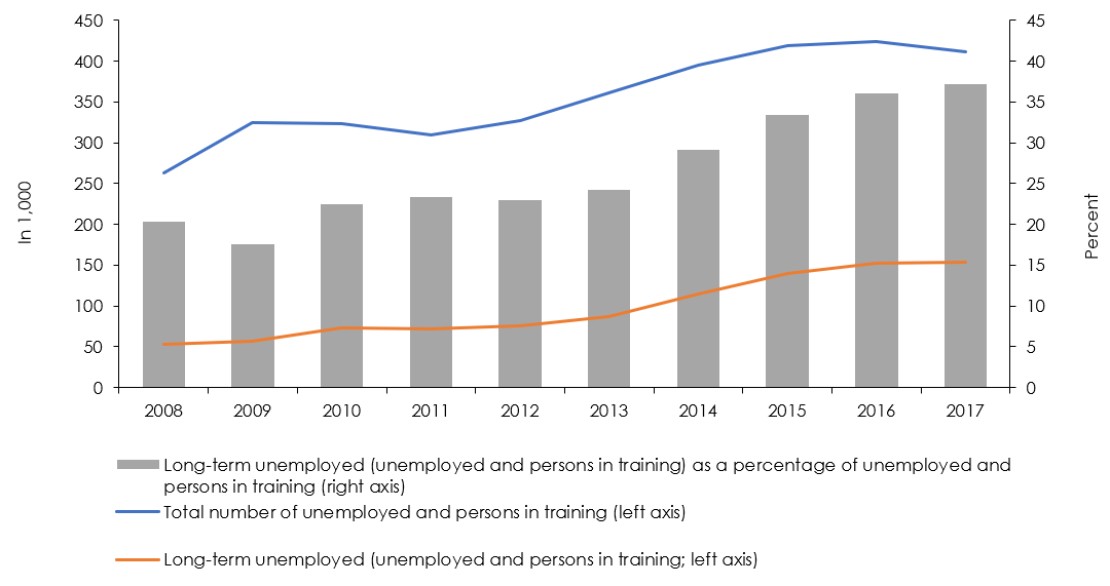
Unemployment Remains High
There is good and bad news about the Austrian labour market. First the good news: the economy is in its second year of boom. Thanks to this good economic situation, unemployment has been falling again since November 2016 after five years of growth, and since March 2017 at a more dynamic pace. Even the long-term unemployed are now benefiting from the upturn. Employment continues to grow significantly, as does the number of job vacancies. In short, the labour market is recovering.
Now for the bad news: a difficult decade has left deep marks. First the economic crisis in 2008/09, then a phase lasting several years with low economic growth and a massive increase in the labour supply caused unemployment to skyrocket. During this period from 2012 onwards, a surprising number of jobs were created for the sluggish economy. But this expansion in demand for labour was not enough: the supply of labour increased even more. As many, especially Eastern European, workers moved in, more women work and older people stay longer in employment in response to recent pension reforms.
From 2008 to 2017, the number of employees rose by 267,000, the number of available workers by 416,000. The result was 149,000 more unemployed (including people in training). Due to this sharp increase, unemployment remains historically high despite the current decline. In 2017, 412,000 people were registered as unemployed or in training. The unemployment rate was 8.5 percent, with training 10.1 percent. In addition, unemployment has become entrenched in many cases. In 2017 there were 153,000 long-term unemployed, almost three times as many people as before the crisis. More than a third of the unemployed, apart from shorter interruptions, have been unemployed for more than a year. The most affected are the low-skilled, the elderly and people with health impairments.
Three main factors hamper the reduction of unemployment: First, labour supply will continue to grow significantly in the foreseeable future. This means more competition, which makes access to the labour market more difficult, especially for the low-skilled unemployed. Secondly, due to demographic ageing and increasing labour force participation, there are more and more older and health-impaired people on the labour market – two groups that find it particularly difficult to find work again once they become unemployed. Thirdly, employment opportunities for the low-skilled are dwindling. Hence the conclusion: the labour market is currently going uphill, but unemployment is and will remain a tough nut to crack.
Figure: Development of unemployment and long-term unemployment

Source: Public Employment Service Austria, WIFO calculations. Long-term unemployed: apart from up to two months' breaks, already more than one year without employment.
Please contact
























